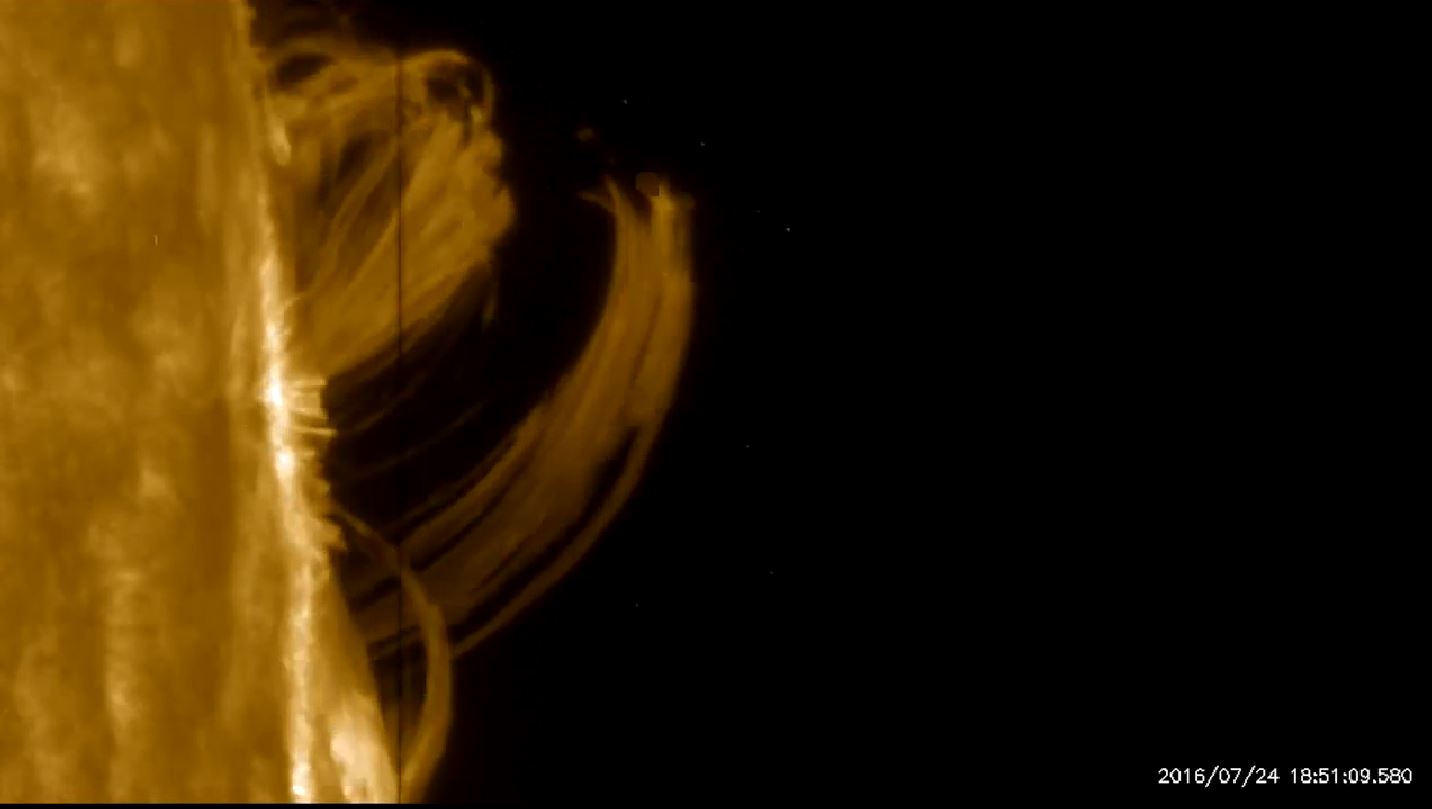Solar Flare Unleashes Violent Plasma 'Rain' (Video)

Bright loops of superheated plasma danced over the surface of the sun during a violent solar "rain" witnessed by NASA's Interface Region Imaging Spectrograph (IRIS).
The IRIS satellite caught a video of this spectacular solar activity on July 24, and NASA released the footage Friday (Aug. 5). The loops of plasma, or electrically charged gas, were generated by a medium-strength solar flare that unleashed a large amount of magnetic energy.
When this material erupts from the solar surface, it shoots into the sun's atmosphere before cascading down in the giant arcs seen in the video. NASA scientists call this flare-driven event post-flare loops or coronal rain.
Coronal rain is driven by similar processes that trigger weather patterns on Earth. Much like the water vapor that forms clouds in Earth's atmosphere, the superhot plasma loops in the sun's outer atmosphere — called the corona — cool, condense and fall back down to the sun's surface.
"The details of how this happens is a mystery that scientists continue to puzzle out," NASA officials said in a statement.
IRIS has been making close-up observations of the sun's surface since its launch in 2013. Keeping a close eye on solar flares helps researchers learn more about the movement of material and energy in the sun's lower atmosphere.
Follow Samantha Mathewson @Sam_Ashley13. Follow us @Spacedotcom, Facebook and Google+. Original article on Space.com.
Breaking space news, the latest updates on rocket launches, skywatching events and more!

Samantha Mathewson joined Space.com as an intern in the summer of 2016. She received a B.A. in Journalism and Environmental Science at the University of New Haven, in Connecticut. Previously, her work has been published in Nature World News. When not writing or reading about science, Samantha enjoys traveling to new places and taking photos! You can follow her on Twitter @Sam_Ashley13.
